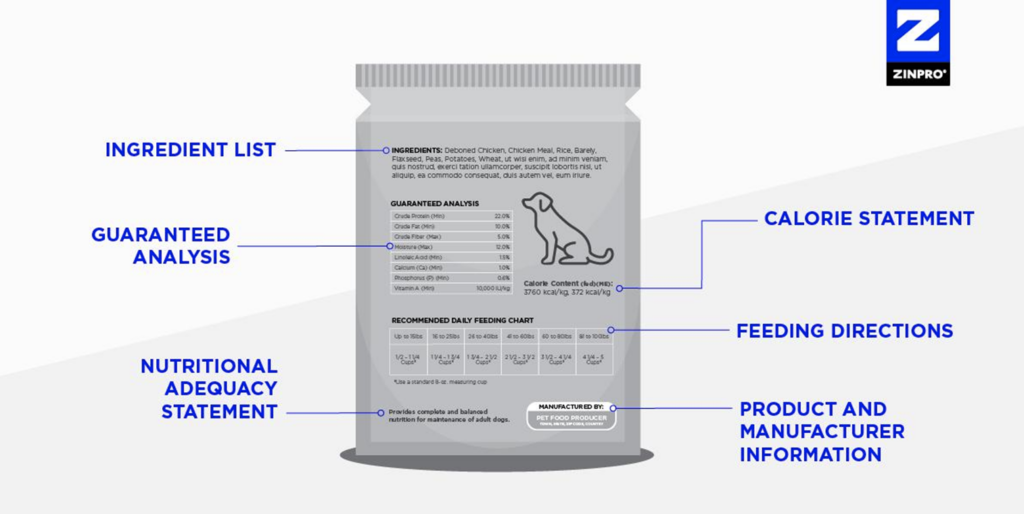To most of us, pets are more than just pets. They are a part of our families, and we always want the best for them, so they live happy, healthy lives.
In wanting the best for your pet, there may be reasons you decide to make a change to their food offering:
- They have developed a skin or paw issue, and you want to explore diet options that could address it.
- They have transitioned into a new life stage: puppy, adult or senior.
- You simply want to feed them something better for your piece of mind.
Providing balanced nutrition to your pet is critical for normal growth and development, metabolism and immune competence, among other things, at every stage of their life. An improper mineral balance in their diet can predispose your pet to bone and joint challenges later in their life, such as dyschondroplasia, osteochondrosis and joint deterioration.
Read More: Understanding Balanced Nutrition in Pet Food
On your journey to providing the best nutrition to your pet, it’s important to read the pet food label on your bag of food and understand what you are looking at. The United States Food and Drug Administration (FDA) and the Association of American Feed Control Officials (AAFCO) have set standards for proper nutrition and how the nutritional values of your pets’ food are labeled on the package. So, you can be confident that if you see it on the label, it’s actually in the product.
Let’s take a look at what is on a pet food label and what it all means so you can start making informed decisions about your pet’s nutrition.
Pet Food Label Sections

Front of the Package
While not necessarily part of the label, the front of the package can tell you a lot about the food you’re considering for your pet. For example, if you’re looking for a pet food for your aging dog, the term “senior” can often be found on the front or in the descriptor of the food. Although there are no defined nutritional requirements for senior dogs opposed to others, food is often specifically formulated to address some of their usual ailments.
From here on out, the pertinent details we will explore are on the label on the back of the package.
Product and Manufacturer Information
On the label on the back of the bag is the name of the product, the net quantity statement — which tells you how much of the product is in the bag — and the manufacturer’s name and address. If you need to know how to reach the manufacturer to address any questions or issues you are having with the product, you can find their contact information here.
Ingredient List
The same as on the food products you eat, the ingredient list includes every ingredient in order of highest inclusion to lowest. Most products will have a pretty picture of fresh meat or vegetables on the front of the package, but here is where you can tell what is truly a primary ingredient, and as a pet parent this is important to know.
Guaranteed Analysis
All pet food manufacturers are required to guarantee the minimum amount of crude protein and crude fat, as well as the maximum amount of crude fiber and moisture. These values were established to ensure your pet is getting an adequate level of nutrition. The pet food will be formulated and tested to meet the nutrient guarantees listed in this section, and reputable pet food manufacturers will have effective testing and quality systems in place to make sure of it.
Nutritional Adequacy Statement
This is one of the most important parts of the pet food label. This statement will include the product name and will state the purpose of the food. For example, it may state that it “provides complete and balanced nutrition for maintenance of adult dogs.” Or it could say it “provides complete and balanced nutrition for growth of puppies and reproducing females in stages of gestation and lactation.” This allows you to ensure the food you are choosing for your pet is specialized for their specific needs or for all life stages.
Feeding Directions
This is one of the most important parts of the pet food label. The feeding directions instruct you on how much of the food should be fed and how often it should be fed. It may include a scale that depends on the weight of your pet. For example, it may say, “Feed X cups per Y pounds of body weight daily.” Many people feed their pets using a cup and don’t really know its size or volume. Using a standard measuring cup and reading and following the feeding instructions can be important to controlling the optimal weight for the long-term wellbeing of your pet.
Calorie Statement
Just like on the label of food that you eat; the pet food label will list the calorie content of the product on a “kilocalories per kilogram” basis. They will also list this information in familiar household units, like calories per cup.
Are Zinpro Performance Minerals Included?
Zinpro Performance Minerals® utilize a unique technology to deliver the best mineral sources to your pet every time with every bite within the diet. Zinpro Performance Minerals have been clinically tested to reduce the severity of atopic dermatitis, a condition resulting in inflammation of the skin from irritation and allergens.
The original ZINPRO® zinc methionine has shown to improve skin and coat health, hair density and growth. ProPath® trace minerals are Zinpro’s latest innovation and provide a grain-free option with superior bioavailability.
Performance trace minerals are included in pet food but they can be hard to identify on a food label. You can start by looking for pet food that includes “zinc amino acid complex” in the ingredient list. However, not all trace minerals are created equal and many other trace minerals sources can fall into that category. So, at the end of the day, you will want to contact the pet food manufacturer or a Zinpro representative to know for sure if your pet’s food contains Zinpro Performance Minerals.
Make Informed Decisions
Always consult your veterinarian when making changes to your pet’s nutrition. They can tell you what your pet will need during their particular life stage. Do your research on the ingredients, and then be sure to read the label and follow the proper feeding instructions.
To learn more about how nutrition and trace minerals play a role in your pet’s overall health, visit our pet nutrition page. To learn about pet foods that contain performance trace minerals, connect with a Zinpro representative.

